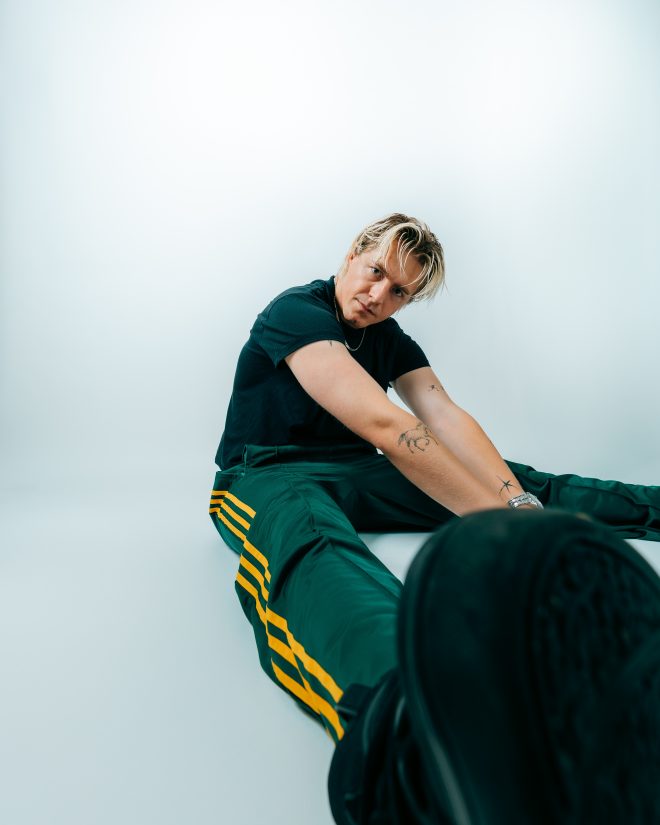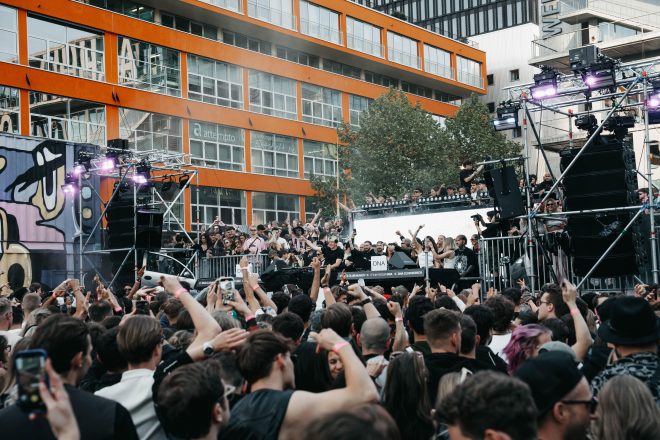Mika Heggemann: engineering emotion, building up unforgettable nights

There’s something quietly radical about Mika Heggemann. In a city overflowing with DJs chasing their moment, he’s busy building his own world from the ground up. His story begins far from Berlin’s warehouses, deep in Germany's industrial heart, where he learned precision before passion. Those years of structure and repetition, as a clerk, an assistant, a tinkerer in band studios, became the unlikely foundation of his artistry. Today, that same discipline fuels his rise as one of Europe’s most self-made and self-defined talents, a name shaping the pulse of a movement rather than just following one.
At the center of it all is Nu Trance, not a revival, but a rebellion. Mika’s sound is emotional, high-speed, and fearless, colliding trance’s euphoria with techno’s edge and hard house’s swagger. It’s music that hits you in the chest before it reaches your head. “Nu Trance” isn’t just about tempo or melody; it’s an attitude, raw, expressive, and unafraid of color in a scene that often worships grayscale. Behind the decks, he’s not mixing tracks, he’s engineering moments, turning chaos into connection, and crafting that fleeting, perfect instant where the crowd moves as one organism.
But Mika’s mission doesn’t end when the lights come on. Through Polyamor Berlin, his label and collective, and the Berlin Dance Music Event (BDME), he’s helping shape the next chapter of the city’s underground. In this space, creativity, collaboration, and independence collide. It’s not just about music; it’s about culture-building, about designing new frameworks for artists to grow without compromise. In a world built on noise and momentum, Mika is doing something more complex: he’s building meaning.
Mika´s story is one of grit. Long before the festival stages and sold-out nights, he was clocking hours in the Bavaria industrial belt, apprenticing as a clerk and learning how to work before learning how to dream. That discipline, he says, became the invisible backbone of everything he does now.
“It always takes longer than you hope or plan. Especially when no one around you has any connection to the music industry, you have to do almost the opposite of what your close environment advises you to do. I learned that you can’t force things; they happen naturally if you keep going.”
For Mika, there was no cinematic moment of revelation, only persistence.
“It wasn’t one single moment when I realized music was my life’s work; it was a series of small moments that kept pushing me forward. But if I had to pick one, it was when I received funding for the Berlin Dance Music Event and was able to start working independently. That’s when I truly understood: this is what I’m meant to do.”
That patient climb also explains his sound, which is layered, self-taught, and deeply personal. Before finding his voice, Mika spent nearly a decade experimenting across genres, building a language of rhythm and emotion one track at a time.
“I’ve always been someone who can identify with many genres. Producing all kinds of styles, from deep house to trap to band music, helped me understand where I truly belong.”
That restless curiosity shaped the hybrid textures that now define Nu Trance.
“Every genre works differently and creates a different kind of emotion. My roots lie in nu metal bands like Limp Bizkit and Linkin Park. Distorted voices, dirty synths, melodic hooks, all of that finds its way into my music now.”
But no city tested and transformed him like Berlin. Arriving alone, with no safety net, he found both chaos and clarity.
“Moving to Berlin on my own was honestly scary. It’s an overwhelming city. When you leave everything behind to start a new path, there’s always fear and uncertainty involved.”
Instead of chasing the excess, he grounded himself in structure, the same discipline that built his foundation years earlier.
“Even though I’ve never really been into the after-hours side of things. I don’t do drugs; I’d rather wake up early and get back to work. Being around that energy taught me a lot. Berlin can give you everything, but it can also consume you if you’re not grounded. It’s a city of extremes, and finding my own balance within that chaos helped define who I am.”
Together, those three elements, resilience, curiosity, and balance, form the blueprint of Mika´s world: a self-made ecosystem where emotion meets engineering and the club becomes both a stage and a sanctuary.

A ONE MAN ORCHESTRA
Independence is not a statement of pride but of purpose. Mika´s career operates like a one-man ecosystem, where every decision, from the tracklist to the tour to the label design, passes through his own hands.
“The best part is being able to shape your own environment and build something that truly feels like yours, not just fitting into a scene, but helping to create one. I love having full control over my sound, my projects, and the people I work with.”
But self-sufficiency comes at a cost. The weight of full autonomy can be relentless.
“The hard part is definitely time. There’s never enough of it. Your head never really switches off; you’re working on weekends, during the week, constantly juggling different roles. It’s rewarding, but it’s also exhausting. You have to love it; otherwise, it would break you.”
That sense of balance and pressure also mirrors the foundation of Nu Trance, the sound Mika coined to describe his evolving sonic identity. His definition cuts across labels, tempo, and attitude.
“It’s not really trance, it’s not techno, it’s not house, and it’s not bounce either. We’re playing high-energy dance music around 145 to 160 BPM that takes elements from all of those worlds. It has the off-beat and melodies of trance, the arrangement and structure of techno, and the bounce and groove of hard house.”
But what makes it Nu is not just its speed, it’s its soul.
“What makes it Nu Trance is the attitude and the details, just like Nu Metal once blended rap with heavy guitars. In Nu Trance, you often hear rap or chopped vocal samples used as style elements, and breakbeats are used as fills or to build tension. It’s the fusion of emotion and raw energy, a sound that feels familiar but completely new at the same time.”
To Mika, the genre represents more than just a shift in BPM. It’s a creative counter-movement to the rigidity of the current scene, a rebellion driven by feeling rather than formula.
“Every new genre is born as a kind of counter-movement. I wouldn’t say Nu Trance is against hard techno, but I think it naturally evolved from it. After a few years of very fast and aggressive sounds dominating the scene, new sub-genres started to appear, Nu Trance, Bounce, and the Hard House comeback, all carrying a different kind of energy.”
And at its core lies the same spirit that first drew him to sound: freedom.
“For me, that’s where the breakbeat and rap attitude comes in. It’s about rebellion, self-expression, and not taking things too seriously. It’s raw, emotional, and fun at the same time. Nu Trance brings back color and emotion to the rave. It’s music with feeling, but still built for peak-time intensity.”

CONNECTION AND COMMUNITY
Building music is inseparable from building community. His creative world extends far beyond the booth; it’s an ecosystem designed to empower others, giving shape to the next generation of Berlin’s underground.
“I built both platforms because I wanted to create my own space within the industry, something I could actively shape. That’s exactly what I offer with the Berlin Dance Music Event and Polyamor: platforms that are open, collaborative, and built for people who want to make their own mark.”
Mika believes in openness over hierarchy, in collaboration over gatekeeping.
“Anyone who really knows me knows I’m not about gatekeeping. I want people to use these projects as springboards to build something of their own from them. The more voices we let into the scene, the more authentic and future-minded it becomes. That’s how culture moves forward, when everyone feels invited to contribute.”
That same philosophy translates to his relationship with the crowd. Having played more than a hundred shows across Europe, from RSO to Fuse, Mika approaches every dance floor as a living organism, unpredictable, emotional, and collective.
“It’s funny, but my background actually comes from playing in weddings. I spent years performing for all kinds of crowds, and that really taught me how to read people, how to feel what a room needs, and when to shift the energy.”
There’s always a moment, he says, when everything aligns.
“What I’ve learned over the past year is that there’s a moment in almost every set, sometimes right from the first track, sometimes halfway through, where everything just locks in. The crowd, the sound, the lights, your own mindset, it all connects. That feeling is impossible to describe, but it’s the reason I do this. It’s like time stops for a few minutes, and everyone in the room breathes in sync. That’s what I mean when I say I want to make the dance floor feel infinite.”
That search for connection continues in the studio, where Mika’s breakout track Vibrations marked a personal turning point.
“Definitely Vibrations. That track was a turning point for me. It taught me that simplicity is powerful; you don’t have to force a sound or overthink the process. The best ideas usually come when you let things flow naturally and do what feels easy and true to you.”
It became a lesson in trust, one that redefined his creative compass.
“I used to chase complexity, but Vibrations reminded me that the emotional core of a track matters more than anything else. It’s about trusting your instincts and not trying to sound like anyone else. That’s when your real identity starts to come through.”
Now, as he prepares for a new chapter, his focus turns inward, sharpening the essence of his sound and his vision.
“For me, 2026 is about sharpening my identity, both in sound and in design. As an artist, it’s always a challenge to stay objective and look at your own project from the outside, but that’s how you evolve. I want to refine what Mika Heggemann stands for, both musically and visually.”
At the heart of it, he says, lies emotion, that sacred pulse of connection that binds artist and crowd when the night reaches its purest form.
“When people hear my music at 5 a.m., I want them to feel completely connected to me, to each other, to the moment. Pure emotion, euphoria, love, that’s what I want to create. A space where the outside world doesn’t exist for a while.”


